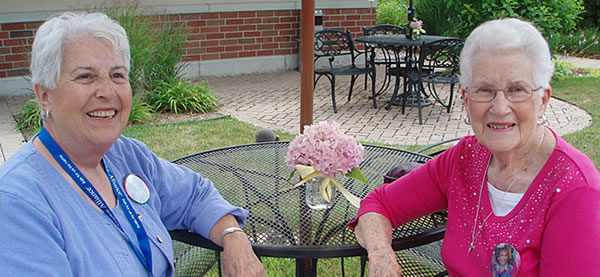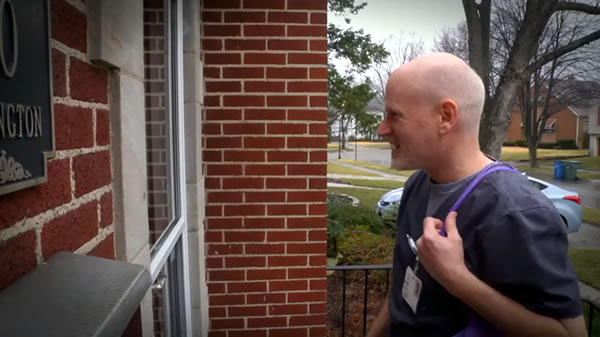As hospice agency management teams face the daunting challenges of falling Medicare and Medicaid reimbursements, rising labor costs, and an uncertain regulatory environment, it’s important to remember who’s at the center of it all: the patient. The need for high quality, empathetic, compassionate end-of-life care is stronger today than ever.
For anyone who’s been in the situation of providing care to the dying, it’s common to describe the experience as both intensely draining and astonishingly enriching. As hospice expert Lina Paola Ingegretsen explains, connecting with hospice patients on an emotional level isn’t always easy, and many caregivers struggle to find the right balance between “meeting the dying as a human being and meeting the dying as a hospice professional.”
And yet, in the hospice setting, delivering “quality care” requires going far beyond what’s been prescribed in a care plan. Caregivers must be willing to genuinely listen to their patients, show kindness, and simply be present. As that trust begins to build, patients come to understand they are truly cared for.
This in turn allows the caregiver to provide better patient care and emotional support – which in turn leads to patients who are happier and more optimistic about the time they have remaining.
Frequently, though, the best advice about delivering outstanding hospice care comes from hospice agencies themselves. Below are real-world approaches from three home hospice agencies that offer powerful examples of what compassionate care truly looks like.
1. Hospice Alliance
Located in Pleasant Prairie, Wisconsin, Hospice Alliance is a community-based, nonprofit hospice agency. Health care professionals at Hospice Alliance provide nursing care anywhere their patients call home – whether it’s at their private home, an assisted living facility, nursing home, or the Hospice House in-patient facility.
Focus on Volunteers
A key difference in the Hospice Alliance approach is the way they have mobilized an impressive foundation of volunteer support for nearly every aspect of the care delivered to patients.

Image source: https://www.hospicealliance.org/
Hospice Alliance offers nearly unlimited opportunities to volunteer, from helping office staff stuff envelopes to enjoying a crafting session at a patient’s home. Among these opportunities, three areas stand out:
- Innovative therapies: The agency prides itself on embracing innovative approaches to compassionate care, and they actively encourage volunteers to translate their own passions into a range of creative therapy services, including pet therapy, art therapy, dance/music therapy and more.
- Recognition of veterans: A longstanding tradition for Hospice Alliance volunteers is to honor veteran patients with a special certificate, homemade quilt, and pin. It’s a small touch that goes a long way.
- Vigil volunteers: Believing that no person should ever have to die alone, these specially trained volunteers stay at the bedside of actively dying patients. This is a particular relief to family members who may not be able to be present for the death of their loved ones.
All Hospice Alliance volunteers undergo eight hours of comprehensive training on the hospice philosophy of care, the history of Hospice Alliance, and specialized topics, such as death and dying, grieving, and family dynamics.
As a testament to their hard work providing compassionate care to patients, Hospice Alliance is a back-to-back recipient of national Hospice Honors awards and was rated “outstanding” or “excellent” by 100% of referring physicians in a recent survey.
2. Hospice at Home
Hospice at Home is an affiliate of Lakeland Health, a nonprofit, community-owned health system in southwest Michigan. Their team consists of more than 50 healthcare professionals and 20 paraprofessionals.
Focus on Children
Although many hospice agencies provide extensive bereavement counseling for family members of patients, Hospice at Home takes that a step further with Lory’s Place, a grief healing and education center that provides services at no charge to family members – with special programs for children ages three to eighteen.

Image source: http://www.lakelandhealth.org/lorys-place/
Lory’s Place uses a peer-to-peer approach that allows children to interact with other children who have suffered similar loss. Along with school outreach programs and peer grief support sessions, activities also include opportunities for fun, such as art play workshops, horseback encounters, and summer camp programs.
The center also provides a heavy focus on education, with a lending library of more than 400 grief-related books and videos available for children to check out, take home, and read at their own pace.
By recognizing the needs of every family member affected by the dying process, Hospice at Home’s caring approach allows everyone to manage the grieving process in their own way, no matter what age. This is of immense relief to both the end-of-life patient and the other adult family members who likely have their hands full already.
3. Graceworks at Home
Dayton, Ohio-based Graceworks Lutheran Services has been providing assistance to older adults since 1926. Its home care agency, Graceworks at Home, offers a range of nursing services and therapy care, as well as non-medical support services – including companionship, medication reminders, family support, meal preparation, laundry, and help with bathing and other daily tasks.
Focus on Joy
At a time when life may seem most bleak to patients, Graceworks pays special attention to those little moments of joy that can make all the difference. It starts with carefully selecting caregivers who share Graceworks’ commitment to “Faithful Caring” – and then thoroughly training them to deliver that promise.

Image source: https://graceworksathome.org/
Perhaps the best evidence that their meticulous recruiting and training process works is to hear what others have to say:
- From Steve, a Graceworks Personal Care Assistant: “I listen to them, I talk with them, I hear their stories, I connect with them. To me, this is an invaluable thing that I feel is the most important part of my job. I love hearing the stories that they have to tell, and I treasure that.”
- From Bill, a Graceworks patient: “The care was first class. All of them were cheerful and capable. They made me enjoy it. When the doorbell would ring, I’d look forward to it. They always made me feel like I was the only patient they had all day.”
- From Carol, daughter of a Graceworks patient: “Mom will say the nurse has been her angel. She helped Mom to set goals and look forward to things again, to get back to living her life with confidence.”
- From Bruce, husband of a Graceworks patient: “Her caregiver makes her life a lot more pleasant. There’s a genuine concern for the individual. We feel very blessed.”
These three hospice agencies are going above and beyond for their patients and raising the bar on what it means to deliver compassionate, patient-centered care. Use these examples to inspire your own approach to hospice care, and you’ll benefit from happier, more satisfied patients, families, and employees.
What tips can you share about compassionate care in the hospice setting? We’d love to hear from you.
Contact CellTrak today to share your insights – and to learn how we can help your hospice agency improve communication with your caregivers, your patients, and their families as you strive to deliver the highest quality care possible.
